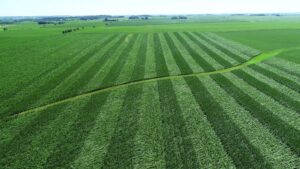In the last article I wrote, I looked at the short-term effects of coronavirus on the seed industry, but now, it’s time to look at the long-term effects and what it means to businesses and consumers in this area.
COVID-19 will see a legacy of debt that many countries have gone into with economies that have ground to a halt. It will lead to an increased awareness of the importance of food by the consumer, but it seems there will be a decrease in importance of agriculture for many governments.
Agriculture exports will decrease as countries try to become more self-sufficient for food supply. The priority for them will be health and looking for quick start ways to kickstart their economies. Many governments have relied on immigration to help increase economic growth, but this will be decreased over the next few years. There will be a greater encouragement of local population growth to stimulate local economic growth. Government incentives may lead to a mini baby boom, pushing us higher than the 9.7 billion population that is estimated by 2050.
This will put even more pressure on having to increase our current food production above 70% of what we currently achieve to feed this population.
We have basically run out of land to be able to create anymore for food production. We could make farming practices more efficient, and this may get us 30% of the way there. However, we will still be 40% short.
The only option we have is through agricultural research to achieve the rest of the gains that we will need. As governments and private companies look to restrict spending, agriculture — and specifically agricultural research — is usually an area that is first to be axed as food production is take for granted. The amount of funding from governments in public agriculture research will decrease until their effort is close to non-existent. That role will fall onto the private companies, and with a decrease in income due to COVID-19, they will also be limited in what they can achieve. So, all new developments in agriculture will be stifled at just the time they need to be increased with the threat of climate change and an increasing world population.
Where can we find a solution to this dilemma? I think the answer comes with the individual.
People willing to experiment on their own farms with different practices can invent new way of doing things. This won’t be done with budgets of millions of dollars but with a passion in agriculture. From these ideas, new products can be formed breaking the mold of how innovation can occur. This requires a level of scientific understanding to prove whether the concept will work or not. That may be the way the public sector can maintain an input into agricultural production. It is stimulating business growth at the farmer level.
Programs that include a participatory component where farmers are involved in the research are not only cheaper to run, but they have committed end users of a product as they have been there from the beginning of its development. It may not be as scientific as what has been performed in the past with research, but with the limitations on the budget that COVID-19 will place on us, we need to look at different ways of doing this so that we can achieve the goal of feeding the world population in the future.
Job creation will be the solution to getting through COVID-19, and with the greater interest that individuals are having in food, there isn’t a better time to create the next generation of agricultural researches on the farm.










